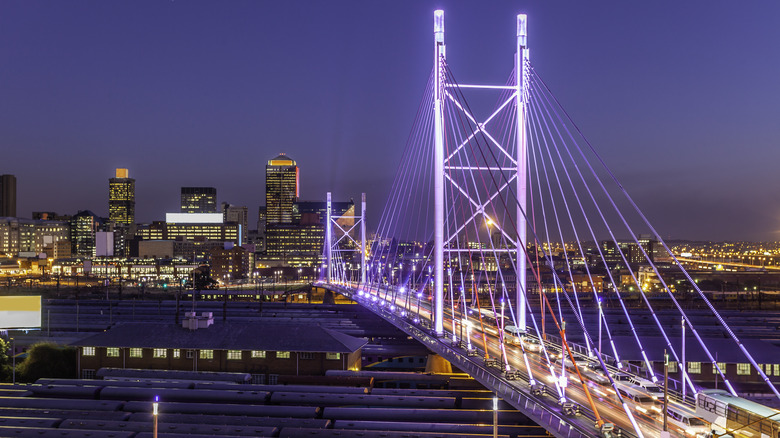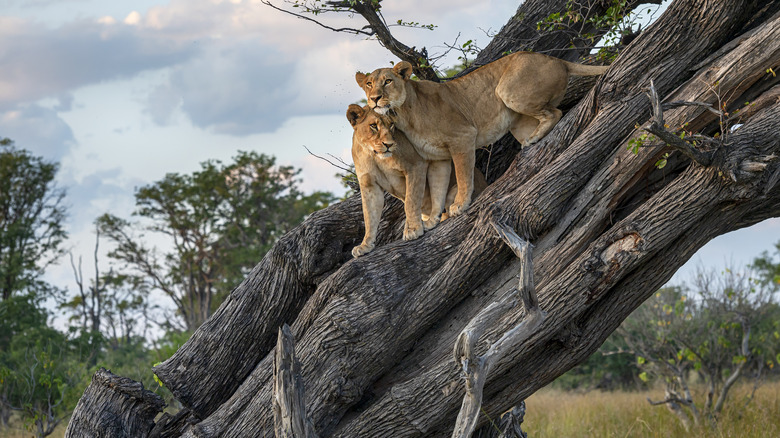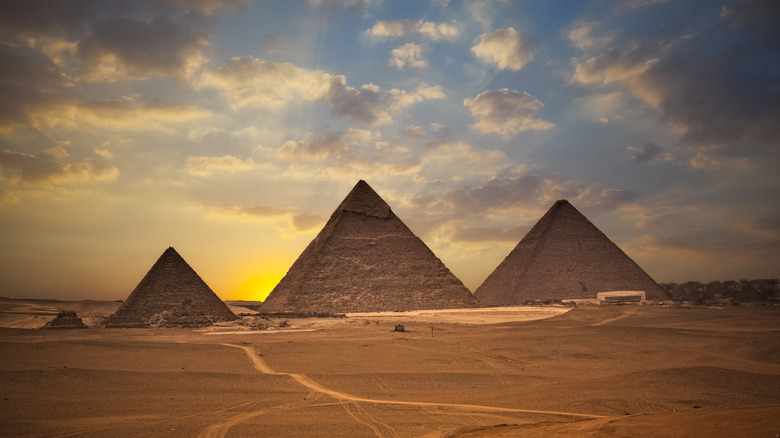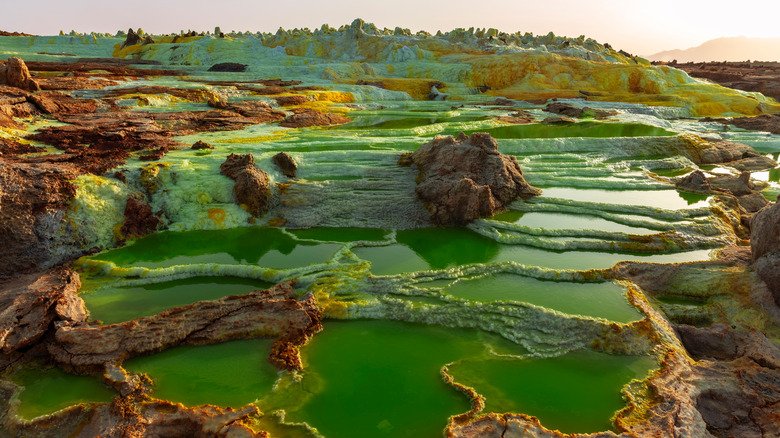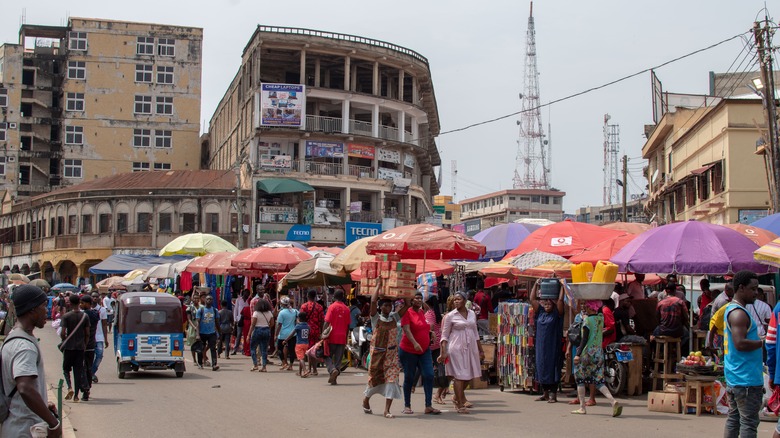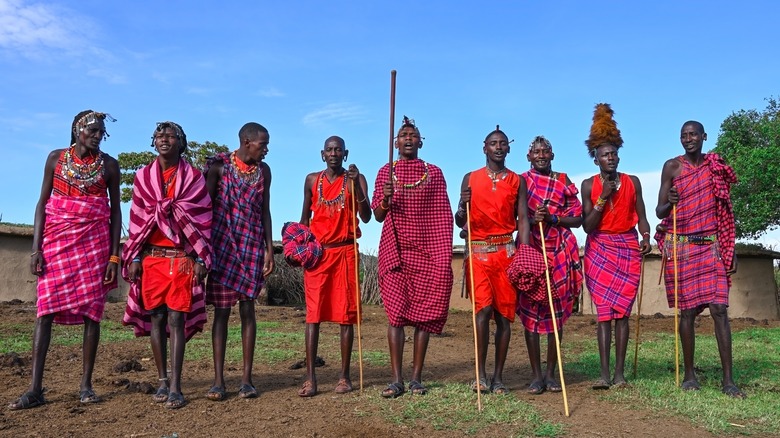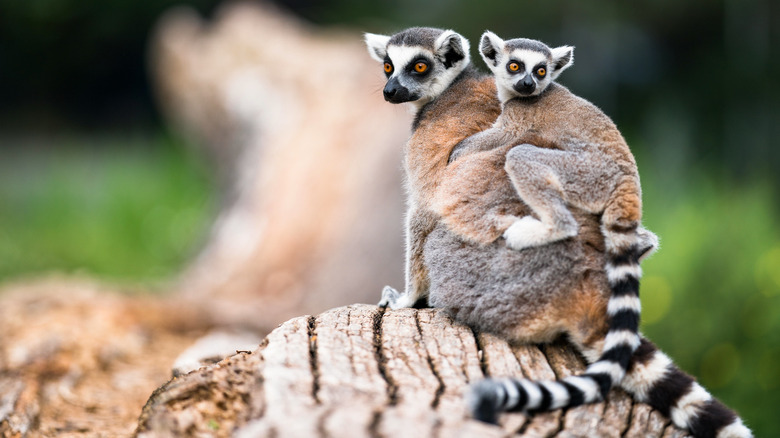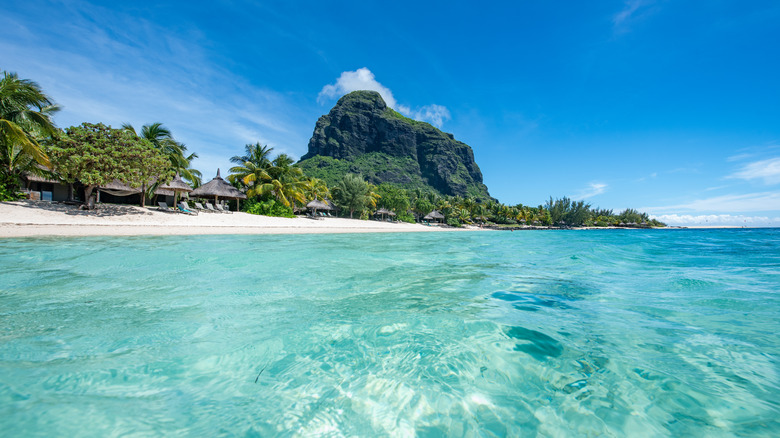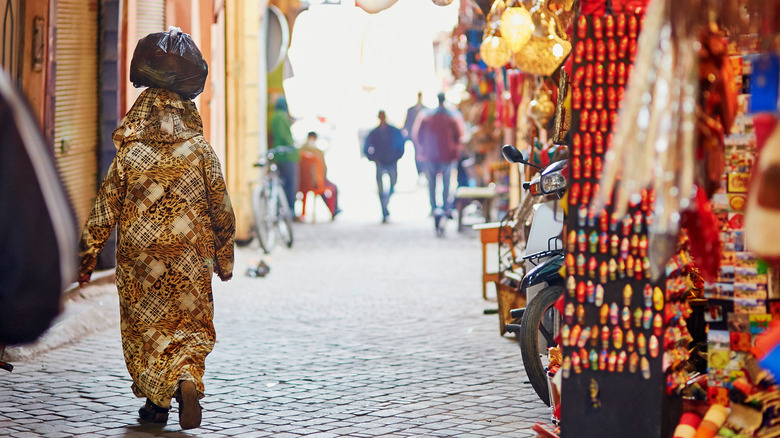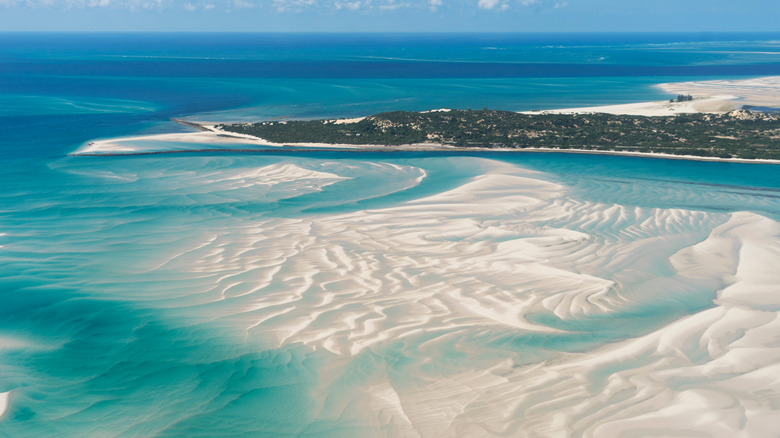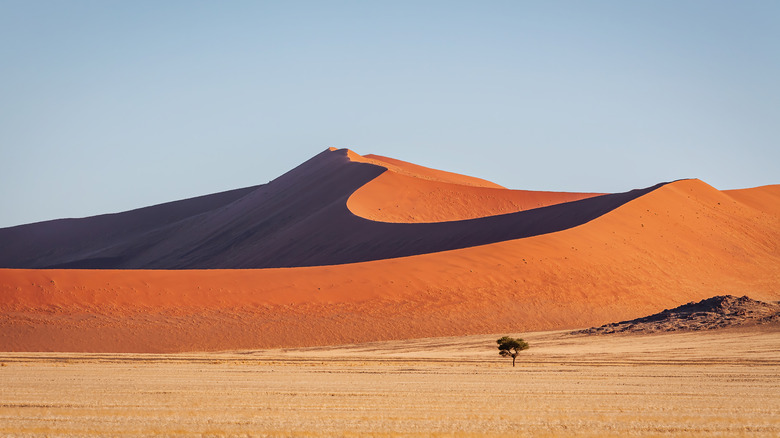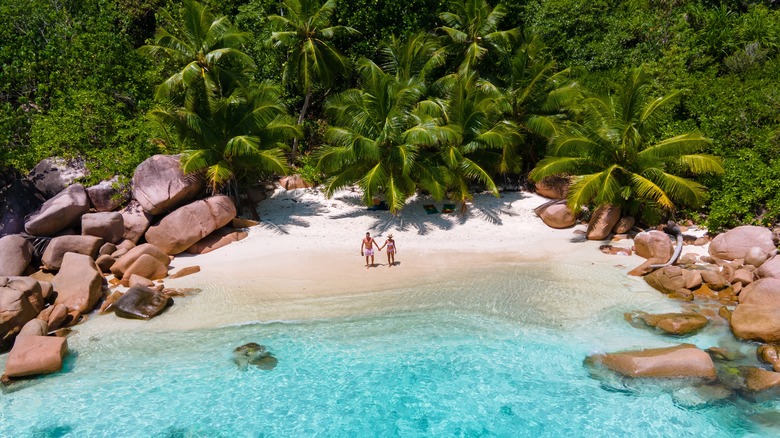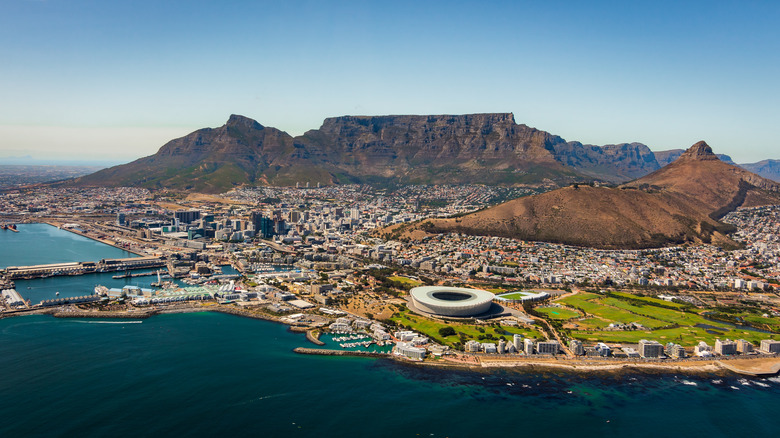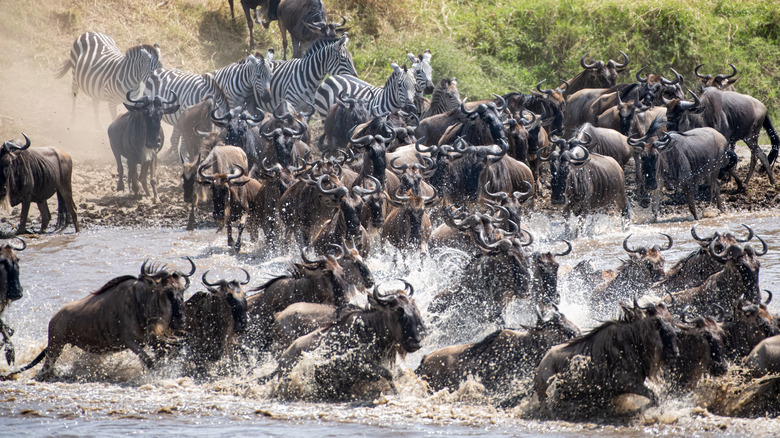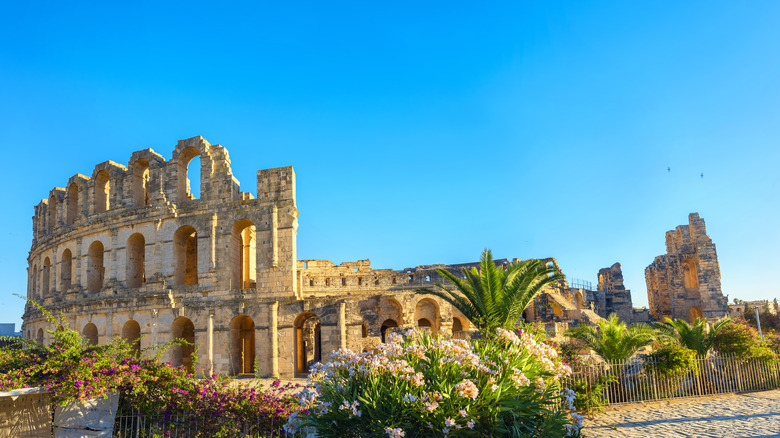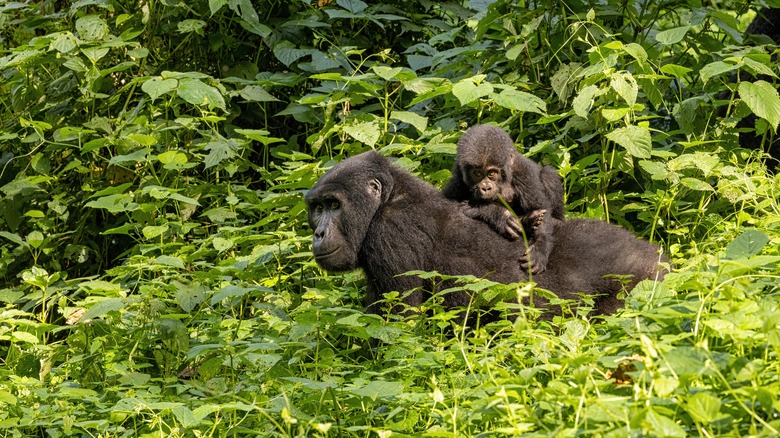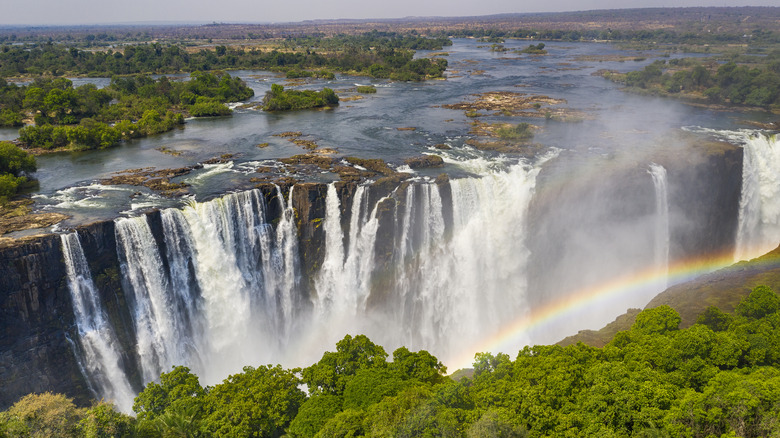Must-Visit Countries To Add To Your Africa Bucket List
The second-largest continent on the planet, Africa comprises about one-fifth of the Earth's total land mass. It's a place of great geographic, cultural, and linguistic diversity, with about one-third of the world's languages originating here. With such dizzying variety in so many facets of life, it should come as little surprise to travelers and explorers that Africa promises a broad range of experiences and excursions. People can find endless expanses of desert, towering peaks, rolling plains that rise and fall for what seems an eternity, unique wildlife, and plenty of sublime coastlines.
And while air service to Africa might not be as extensive from the United States as to destinations in Europe, for instance, there are still plenty of direct flights from the U.S., making a visit to the continent relatively straightforward. The choices really are bewildering, and each nation has its own special appeal, but some destinations really should not be missed. For anyone looking for a bit of travel inspiration, the list below highlights some of the wondrous countries in this part of the world.
Botswana
While casual observers of the continent might accept South Africa's status as a wildlife hot spot, the nation just to its north has some of the best safari experiences in Africa. Vast areas of Botswana have been expressly carved out for the purpose of conservation, ensuring that the wilderness stays wild, and not trampled by rampant tourism. Perhaps the most famous area for visitors is the Okavango Delta, a UNESCO World Heritage Site that sits in the northern part of the country. It's an area of simple beauty, with marshes and plains that flood during certain seasons — a water-filled landscape populated with iconic wildlife such as rhinoceros, lions, and cheetahs.
The marshy conditions also allow for more interesting game drives, with safaris sometimes conducted aboard a wooden canoe known as a "mokoro." Elsewhere in Botswana, the Makgadikgadi Pans form a landscape that's been submitted to be a UNESCO World Heritage site. Once a giant sea, this huge natural phenomenon is primarily 11,580 square miles of salt flats. A breeding ground for flamingos and a photo-worthy landscape, the Makgadikgadi Pans also feature a number of historical sites with fossils from ancient animals and remnants of Stone Age civilizations, making it a must-visit destination for those interested in prehistory, ancient history, and unique ecosystems.
Egypt
Few ancient wonders of the world are more iconic than the pyramids of Egypt, which are located in Giza, a section of the Cairo metropolitan area. Together with the Great Sphinx, seeing the Pyramids of Giza is a bucket list experience for travelers worldwide. The pyramids were built more than 4,000 years ago as tombs for royalty, and are one of the Seven Wonders of the Ancient World. The tallest pyramid, Khufu, was the tallest manmade structure on the planet for thousands of years, and the pyramids are the only one of the Seven Wonders still standing today.
Cairo is also home to the River Nile, another legendary destination. It flows more than 4,000 miles through the continent, finally flowing into the Mediterranean Sea, and has long been a key waterway for trade, commerce, and agriculture, pivotal in establishing such a formidable civilization in ancient Egypt. Today, visitors can explore its charms on the many cruises that ply this, which actually snakes through 10 other countries apart from Egypt. You can also take a multi-day cruise from Cairo down the Nile to explore the ancient tombs and temples of Luxor.
The waters of the Egyptian Riviera, on the Sinai Peninsula, are also hugely attractive. Due to their clarity and marine life, these waters are a massive draw for snorkelers, divers, and anyone who loves to kick back and enjoy the sea. And when hunger strikes, make sure to eat falafel. Although many countries claim its origin, most historians agree the iconic dish was invented in Egypt.
Ethiopia
The oldest evidence of humans was found in Ethiopia, and this East African country also lays claim to a rich architectural history. A UNESCO World Heritage site, the Rock-Hewn Churches of Lalibela are another example, like the pyramids, of relentless labor and focus. These churches were not built brick by brick, or slab by slab, but in fact were, in essence, sculptures formed by chipping away at the rock and forged centuries ago into the mountains. Walking around the churches, which lie mostly in two main areas, it's hard not to be bowled over by the work and willpower required to create these architectural wonders.
Elsewhere, the Danakil Depression is an area where three tectonic plates meet, and that sits below sea level. It's an extremely hot part of the world, but what's more interesting is the surreal landscape, with lakes of lava and salt, hot springs with acidic, neon-colored waters, and volcanic formations. A trip here feels akin to interplanetary travel. A visit to Ethiopia, of course, wouldn't be complete without the delicious food, typically served with the pleasantly sour, wonderfully pliable, and gluten-free injera bread.
Ghana
Apart from having a great national men's soccer team, this West African nation has plenty to keep visitors entertained and enthralled. A definite stop is the town of Kumasi, the heart of the Ashanti part of the country, and the city where the king of the Ashanti tribe sits. Kumasi has a royal palace, and depending on the timing, travelers might be able to get a peek into the life of a royal when he hosts public meetings, open to all.
The main reason many come to Kumasi is the huge market, formally known as Kejetia Market, with more than 10,000 stalls selling everything from clothing to jewelry to artisanal crafts to food. Of particular note is the colorful fabric for which this part of the country is famous. The villages around the city are also great spots for shopping for gifts, with gold jewelry, wooden carvings, cloth, and clay pottery among the items available. Nature lovers looking for some excitement can visit Kakum National Park, which promises plenty of wildlife, as well as a series of suspension bridges slung up above a forest of centuries-old trees.
Kenya
Positioned in East Africa, this exciting country offers travelers excellent safaris, as well as the chance to meet people from the Maasai tribe. The safari experiences in Kenya are world-renowned, offering visitors the chance to spot lions, giraffes, and elephants, as well as other creatures such as the black panther, in their natural habitats. Kenya has more than 40 national parks and about 100 conservation areas, so there is plenty of scope for viewing. There are also a variety of ways to see the fauna — on jeeps, via horseback, paddling on the water, and even on a hot-air balloon.
The diversity extends to the country's geography, from the grand Mount Kenya, sometimes dusted in snow, to the endless plains and the vast Great Rift Valley. Among the annual highlights is the Mara Migration, when millions of animals migrate from Tanzania to Kenya, most visibly from July to October each year. During a safari, adventurers can also plan to interact with members of the Maasai tribe, notable for their traditional red robes, spears, and intricate jewelry. This form of Indigenous travel with a guide helps the Maasi to retain their traditional heritage. Kenya also boasts plenty of coastlines, with humpback whales visiting the waters from August to October, and you'll find many fantastic beaches both on the mainland and on islands like Lamu and Diani.
Madagascar
Look at a map of Madagascar, and you can easily see how it can slot into the coastline of mainland Africa, a landmass that it was once a part of. The wildlife here is truly unique, and the island is an eye-opening place for nature lovers. It has been separated from the mainland for millions of years, and that has resulted in endemic biodiversity of flora and fauna found nowhere else in the world. For lovers of wildlife, and nature in general, Madagascar is the Mother lode. It's huge, larger than the whole of France, and yet only has a population of about 30 million people.
Of all the animals unique to Madagascar, maybe none are as endearing, or plain cute, as the lemur, an endangered primate. There are many species of them, but a couple stand out. The sifaka is playful, with large eyes and white fur, sometimes skipping along the ground on its back legs, or the ring-tailed lemur, which looks almost like a cross between a squirrel and a bat. A trip to Madagascar wouldn't be complete without an excursion to see the giant baobab trees in the south and west of the country, characterized by their soaring columns of wood that seem to exude ancient wisdom.
Mauritius
Like Madagascar, another island lazing in the Indian Ocean off the east coast of the African mainland, Mauritius has stunning beaches and an interesting cultural history. The country's history is tied to places all over the world, with the Dutch colonizing the island in the late 1500s, followed more than a century later by the French. Less than 100 years later, the English planted their flag here, and Mauritius remained a British colony until its independence in 1968. Throughout the centuries of colonialism, workers from Africa, China, and India were brought here to toil on the plantations and complete infrastructure projects, and today, this diversity remains very much a part of the island.
There are festivities for Islamic holidays, Chinese New Year, and the Indian celebration of Diwali. Wandering the streets, travelers will hear locals speaking in Chinese dialects, Hindi, Urdu, French, English, and the local patois of Creole, among other tongues. The food, blissfully, is equally eclectic, while the beaches are uniformly incredible. Among the top strands of sand are Mont Choisy in the north, where conditions are generally calm, the marine park of Blue Bay in the south, the long Belle Mare on the east coast, and the striking Le Morne, which sits below a mountain. Be sure to spend some time at Île aux Cerfs as well, an island located in a lagoon that's popular with tourists due to its idyllic waterfront.
Morocco
While the earthquake in September 2023 was a devastating event, and something to be aware of as a tourist visiting Morocco, this North African nation is still no less appealing for its multifarious attractions. For starters, the souks, or markets, are spellbinding. The most amazing of them is in Marrakech, a city on most tourists' hit list. The narrow alleys that spread out throughout the Medina, or old town, are sometimes pierced by shards of light, giving them a mystical, nigh-religious feel. In them, among the throngs of locals who regularly shop here, visitors will find jewelry, clothing, shoes (the leather slipper, known as a "babouche," is a light, easy-to-pack item worth seeking out), meats, artwork, decorative lamps, spices, and so much more.
Even if you don't buy anything, just wandering around the souk while sipping a cup of mint tea is a reward in itself. The central square of the Medina, known as the Jmaa el Fna, livens up each evening, with performers, snake charmers, storytellers, and stalls serving food. The architecture of the old towns also tends to be quite spectacular, and the Medina of Fez is listed as a UNESCO World Heritage site. Outside of the cities, the High Atlas area, which was impacted by the recent earthquake, is filled with small Berber villages, great hiking, and gorgeous scenery.
Mozambique
In the southern part of the continent, and across from Madagascar, this Portuguese-speaking country promises visitors some of the most mesmerizing seascapes in Africa. A string of 31 islands that run north-south over about 200 miles, the Quirimbas Archipelago has been proposed for the UNESCO World Heritage site list. They are striking places, with fine beaches, unexpected sand bars, teeming marine life along healthy reefs, and mangroves that support juvenile fish, but they also hold a deep cultural significance.
Some of the islands still display Portuguese settlements dating back to the colonial times, as well as much older settlements that pre-date the colonial era, and together, they trace influences from Europe, India, Arabia, and Africa for a millennium. Another favorite destination is the Bazaruto Archipelago, which is home to some of the best beaches in the world and a national marine park that aims to protect the ecology of the Indian Ocean. Away from the islands, the capital city Maputo displays fine examples of neoclassical and neo-gothic architecture, reflecting the country's mix of cultural influences.
Namibia
On the west coast of Africa, next to Botswana and South Africa, this country has the sparse geography of the world's largest sand dunes, a sight that is a truly humbling experience. The Sossusvlei dunes are located within the Namib-Naukluft National Park, a vast conservation tract that some believe is the largest on the continent. Sossusvlei itself is a giant flat area, combining salt and clay, though the dunes give it some vertical heft. Seeing the dunes as the light shifts, some as high as 1,300 feet, is really breathtaking. For photographers, the shadows and light around dawn and dusk can produce especially magical photos.
One of the most visited sand hills is called Dune 45. Easily accessible from one of the park's gates, the dune is tinged in red due to the high iron-oxide content of the sand. For shots with even more vivid color, camera-carrying tourists can head to Walvis Bay, a lagoon where the teeming avian life includes thousands of bright pink flamingos.
Senegal
The music scene in this French-speaking, West African country is lively, especially in the capital of Dakar. Senegal is where Youssou N'Dour, Baaba Maal, and Cheikh Lô rose to stardom, singers whose rhythmic beats and soaring vocals have an undeniably transporting effect. There are many live venues all over the city, and, if you're lucky, you might catch one of the global stars doing an intimate show. While in Dakar, you may also want to visit the Island of Gorée, a UNESCO World Heritage site. Sitting just off the coast of the city, the island was the largest churning slaving entrepôt on the African coast for centuries. Now, it's a pilgrimage destination for many, especially among the African diaspora.
Near the capital, Lake Retba is a visual delight. Located near the Atlantic, this pink lake receives its colorful tint from the water's high salt content and specific bacteria. The dry season, from November through June, is when the lake's color packs the biggest punch. Senegal is also a foodie destination, with renowned dishes like thiéuboudieune (rice with fish), Kandia soup (a stew made from okra), and Mafe (rice with a sweet potato and meat sauce) all readily available.
Seychelles
A series of islands moored out in the Indian Ocean, Seychelles is home to beaches that defy belief, and one of the most iconic beaches on Earth is located on the island of La Digue. Anse Source d'Argent features huge boulders of granite that have been weathered by the elements, some darker than others, and some smoother as well. The contrast of these hulking rocks against the brilliant white sand and crystal-clear, turquoise water is magnificent. As you can imagine, snorkeling, scuba diving, boating, and fishing are all popular activities in Seychelles.
Over on the island of Praslin, Anse Lazio is a grand sweep of sugary sand that yields to another bay of gorgeous turquoise water. The island is also home to the Vallée de Mai Nature Reserve, a UNESCO World Heritage site where the rare coco de mer still grows (it is endemic to the Seychelles). This huge fruit has a giant seed whose shape is wickedly suggestive and a fleshy interior that tastes a little like coconut.
South Africa
Arguably the most beautifully placed city in the world, Cape Town is just one of the many lures to this nation with 11 official languages. The city sits on plains and foothills, rising up slopes and below ridges, defined by a number of natural features. The Atlantic and Indian Ocean ring vast parts of the city, while the pointy peak of Lion's Head rises high to one side. The most overawing presence is, perhaps, Table Mountain, a huge, flat block of rock that dominates every vista and offers great views of the city from above.
Near to city, the Cape Winelands have fabulous vineyards with an equally hypnotic scenery to boot. Of course, South Africa is rightly famous for its safaris, with destinations like Kruger National Park spoken of in reverential tones by those in the know. The park, a premier safari spot on the continent, features more than 150 five-star lodges, meaning you can watch the wildlife in style and comfort.
Tanzania
The Tanzanian equivalent of Kenya's Mara Migration, the Great Migration is a sight for the ages. During this spectacle, millions of wildebeest move hundreds of miles in an annual tradition that has played out for centuries. The birthing of young starts a cycle where adult wildebeest move as they forage for food for their families while trying to evade hungry predators such as hyenas and the king of the jungle, the lion. Dry conditions send the herds north to Kenya, where the grass provides fodder, and where they are joined by zebras in their migratory path. Watching the endless streams of creatures parade along their route is impossible to put into words. Even outside the migration, Tanzania offers great safari viewing.
Tanzania is also home to Zanzibar, a cool island with superlative beaches. Awashed with the evidence of the many cultures that have lived here over the centuries, the eclectic and historic village of Stone Town on Zanzibar is definitely worth exploring, and the island also features one of the world's most unique dining experiences. The Rock Restaurant is perched upon a rock outgrowth surrounded by the turquoise waters of the Indian Ocean, and if you're visiting Zanzibar, it's a dining destination not to be missed.
Tunisia
As expected from this North African country that sits on the Mediterranean Sea, the beaches in Tunisia can be quite special. However, what makes this destination extraordinary are the Roman ruins that are very much intact. The Amphitheater of El Jem, a UNESCO World Heritage site since 1979, was built in the third century B.C. and was the largest colosseum in North Africa. Able to hold up the 35,000 visitors in its heyday, the colosseum was built to mirror the more famous one in Rome.
Another UNESCO-accredited site is the city of Carthage, which was initially built by the Phoenicians and subsequently developed by the Romans. Walking around the many sites here, travelers will learn of the range of cultures that left their imprint on the city's buildings. For beach lovers, the resort of Hammamet is a surefire bet, with blinding, whitewashed buildings set against fine turquoise waters that just beg to be enjoyed, and the town's medina offers awesome shopping opportunities.
Uganda
Uganda is, without a doubt, one of the best places to trek to see mountain gorillas in their natural habitat. Taken most popularly in Bwindi Impenetrable National Park, these wilderness excursions are best done at specific times of the year, mainly in the summer and in December when the park tends to get less rainfall. This isn't the kind of trip, however, that travelers can do independently. You're required to purchase a permit in advance and book the outing with a qualified tour operator.
As a note, hiking to see the mountain gorillas is not a cheap adventure, likely to run into thousands of dollars, but the cost can be well worth the chance to see the gorillas shuffling through the forest, or just looking up at a tree. What's more, some of the cost goes toward conservation efforts, so it's money ethically spent. These mountain gorillas are extremely low in numbers, and treks usually entail a group trying to follow a particular family on that day, rather than just wandering around aimlessly hoping to spot one.
Zimbabwe
The thundering Victoria Falls is a sight that visitors will never forget, and it actually forms part of the border between Zambia and Zimbabwe. It's known as the largest waterfall in the world, thanks to the huge width and high drop, and its local name in the Koloko and Lozi languages of Mosi-oa-Tunya translates to "smoke that thunders," a reference to the spray from the cascade and deafening roar of the water. The falls are epic in their scale, which is even more impressive when seen from above on a scenic flight. While they might look like one long curtain of relentless water, the cascade is actually made up of many individual falls, such as Rainbow Falls, the Devil's Cataract, and the Main Falls.
For more thrills involving water, visit Chinoyi Caves National Park, where a large swimming hole has walls that drop down 150 feet, and where the gorgeous blue water is beautifully clear and great for exploring on a dive. If you'd like to incorporate wildlife viewing into your Zimbabwe adventure, consider a traditional or camping safari in Chobe National Park, which typically includes a scenic river cruise along the Chobe River to spot the country's diverse wildlife.
